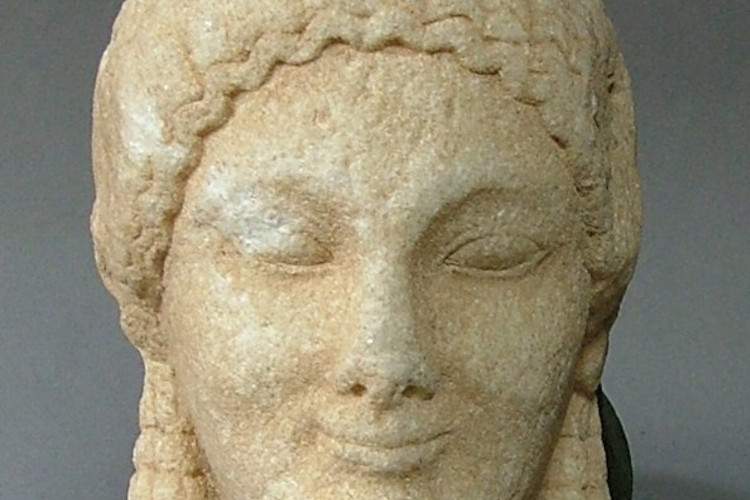750 archaeological artifacts from clandestine excavations repatriated from London
Presented in Rome, at the National Museum of Castel Sant’Angelo, seven hundred and fifty archaeological finds repatriated from London on May 19, following investigations by the Carabinieri Tutela Patrimonio Culturale Command, coordinated by the Public Prosecutor’s Office at the Court of Rome, aimed at countering international trafficking in cultural goods, which also resulted in an out-of-court procedure and a civil lawsuit, conducted in close collaboration with the Ministry of Culture through theAttorney General’sOffice.
Coming from clandestine excavations on Italian soil, the finds had flowed into a British company in liquidation, Symes Ltd, which was traceable to Robin Symes, a prominent trafficker in cultural goods. The company, which had always resisted repeated recovery attempts by the Italian Judicial Authority and was subject to bankruptcy proceedings in the UK, was also sued in Italy, through the Avvocatura Generale dello Stato, for the return of the goods or civil compensation for damages.
The handover was made possible thanks to the complex negotiations followed by the Ministry of Culture (Office III of the General Secretariat, Legislative Office and General Directorate of Archaeology, Fine Arts and Landscape), in synergy and close collaboration with the Carabinieri dell’Arte who, with the active collaboration of the Italian Embassy in London, escorted them to Italy. The agreement for the return was signed last May 11.
The set of artifacts, which can be dated in total between the 8th century B.C. and the medieval period, and whose value is estimated at 12 million euros, offer a cross-section of the manifold productions of ancient Italy and the islands, reflecting at the same time the irremediable laceration suffered by the numerous and diverse archaeological contexts (funerary, cultic, residential and public) subjected to depredation, concentrated particularly in Etruria and Magna Graecia.
Among the most valuable pieces are a bronze tripod table from an aristocratic context of the Etruscan Orientalizing period, two equine parade headstalls from the Appulo-Lucanian area, two funerary paintings from the southern area for the Roman period, some marble male heads from the imperial period, various portions of statues and bronze groups, and the wall painting depicting a small temple ripped most likely from a Vesuvian residence.
The reacquired materials include fictile vessels, both locally produced and of Attic and Corinthian manufacture, in bronze and glass paste, elements of clothing and jewelry in gold, silver, bronze, bone, and amber, including twenty-six necklaces reassembled in the prospect of’placing on the market, weapons, utensils and furnishings, elements of equine trappings, votive and architectural coroplastics, sarcophagi, including one in lead with relief decoration, and funerary urns, votive and ritual objects, elements of statuary in bronze, marble and limestone, architectural elements and furnishings in bronze and marble, and mosaic and painted decorations.
“The recovery of illicitly stolen cultural heritage is one of the priorities of my program, protecting also means preventing our heritage from being plundered by unscrupulous traffickers. The joint action between the Ministry and Carabinieri TPC is a virtuous example of institutional collaboration to be preserved and consolidated also with initiatives like this one, in which we worked side by side with Greece. I thank the Carabinieri for their valuable daily work, carried out in every part of the world,” said Culture Minister Gennaro Sangiuliano.
“The repatriation of these precious artifacts from the United Kingdom is further confirmation of the well-established synergy in the recovery action between the Carabinieri Command for the Protection of Cultural Heritage and the Ministry of Culture,” said Brigadier General Vincenzo Molinese, Commander of the TPC. “The specific case also saw the fundamental involvement of the State Attorney General’s Office and the Italian Embassy in London. Once again today we celebrate the constant commitment of the Carabinieri dell’Arte aimed at protecting Italy’s cultural heritage.”
“When institutions work as a team, results always come,” commented Mario Turetta, Secretary General of the Ministry of Culture.
The press conference was also attended by Lorenzo d’Ascia, Advocate General of the State Attorney General, and H.E. Eleni Sourani, Ambassador of Greece to Italy.
On the same date a similar agreement was signed by Greece’s Ministry of Culture with Symes Ltd for the recovery of other artifacts illegally exported from Greece. An additional group of fragments will be studied by Italian and Greek archaeologists in order to trace their provenance and then proceed to return them to their respective states. Another seventy-one artifacts, currently in the United States, will be recovered in the coming days by the Carabinieri Command for the Protection of Cultural Heritage.
 |
| 750 archaeological artifacts from clandestine excavations repatriated from London |
Warning: the translation into English of the original Italian article was created using automatic tools. We undertake to review all articles, but we do not guarantee the total absence of inaccuracies in the translation due to the program. You can find the original by clicking on the ITA button. If you find any mistake,please contact us.





























